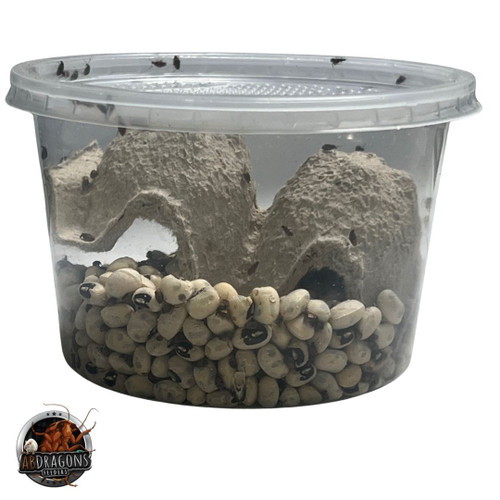Product Description
Bean beetles thrive on black-eyed peas, which are rich in protein, fiber, iron, calcium, and even a bit of vitamin A. These beetles make excellent snacks for dart frogs and other reptiles or amphibians that prefer smaller prey items. Each culture can yield hundreds of beetles over the course of several weeks.
These beetles make excellent feeders for dart frogs, juvenile lizards, small invertebrates, fish, and more!
Maintain daytime temperatures between 75–85°F to keep the colony actively reproducing.
Do not release bean beetles into the wild! They are agricultural pests and can cause serious damage to crops. To safely dispose of them, place them in the freezer for several hours before discarding.
Q: What is the life cycle of bean beetles?
Female bean beetles lay hundreds of eggs directly on the surface of beans. Depending on the surrounding temperature, the eggs hatch within 5 to 20 days. Once hatched, the larvae chew into the beans, where they feed and develop until pupation. Adults eventually emerge by chewing a hole through the bean’s surface.
Temperature plays a major role in their development. At room temperature, it can take up to 7 weeks for adults to emerge. However, at 85°F, development speeds up, with adults appearing in just 3 to 4 weeks. Adult beetles live only about 10 days to 2 weeks.
Q: How do I care for my culture?
Keep your culture at 75–85°F during the day for optimal reproduction. No additional food or moisture is needed—just add fresh dried beans as needed. Adults will continue laying eggs, and new generations will emerge regularly if kept within the recommended temperature range.
Q: What types of beans can I use?
We recommend using dried, organic beans to ensure the safety of both the beetles and the animals that eat them. Suitable options include black-eyed peas, mung beans, and adzuki beans.














